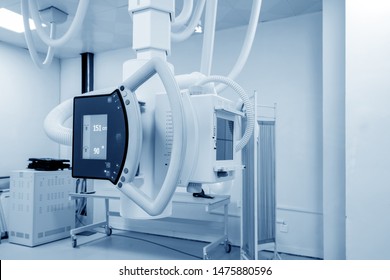
In future posts we will discuss these other scanners that also have very large cone-angles as cone-beam CT has been applied to a number of disciplines including: interventional radiography, cardiography, radiation therapy guidance and dental imaging.Īt a high-level we went from first-generation CT being Parallel-beam CT to then Fan-Beam CT much faster to acquire a single slice. These systems were always cone-beam in nature as they evolved from interventional radiography systems rather than from early 3 rd generation CT scanners. We also note that sometimes in the literature when people use the phrase cone-beam CT they are referring to systems which use a flat-panel detectors (that were originally designed for radiography and fluoroscopy procedures) in order to perform the CT. X-Ray Tube and Detector from view to view There were more major differences required in the CT reconstruction when the number of rows became greater than 16, so that is where we will draw the distinction between fan-beam and cone-beam systems. With a sum-what arbitrary distinction drawn between fan-beam and cone-beam when the number of detector rows is larger than 16. In this summary table we highlight the differences from parallel-beam to fan-beam to cone-beam. That is a huge leap in coverage from the early days of 3 rd generation CT. Now Cone-Beam CT is the basis of modern CT scanners and it is, also called multi-detector CT (MDCT), as there was a gradual progression of rows of CT detectors on systems from 1,2,4,16, 64, until today where state-of-the art systems can have 256 or more rows of CT detectors. On a modern (state-of-the-art) CT scanner one can scan the whole heart or the whole head in just one single rotation (more discussion on this below).

As you can see in the figure more of the volume is covered at one time and thus we are need fewer rotations in cone-beam CT. However, in this case the detector has many more rows so the shape of the x-ray beam coming out looks more like a cone than a fan.Įach rotation is still fast (just like in fan-beam CT) but fewer rotations are needed in order to scan the entire anatomy of interest. an x-ray source and x-ray detector mounted straight across one another). Then what came after fan-beam CT is called Cone-Beam CT and the geometry is the same as the third generation CT (i.e. This is where cone-beam CT comes in for even more acceleration in the speed of acquisition.
FLUOROSCOPY GIF MACHINE FULL
Therefore, many rotations are needed to cover the full anatomy. Instead of translating you just turn on the x-rays and then the whole slice in this direction and here is covered in x-rays so we can get one rotation relatively quickly and don’t have to wait for those translations anymore.Įach rotation in fan-beam CT provides just one slice. The reason it is called Fan-Beam, is because the beam coming out of the x-ray tube makes the shape of a fan.

That is why parallel beam CT was replaced with fan-beam CT.įan-Beam CT was introduced in 3rd generation CT. This then needs to be repeated for each slice after translating the table. We don’t introduce new generation terminology for 2T2D systems or whole organ coverage systems.Īfter all of that in parallel beam CT we still have acquired only one slice of the patient. While some have made different classification systems, we believe that all these systems are based on 3 rd generation CT where the x-ray source and detector are rigidly mounted on the gantry across from one another. the brain or the heart) in a single rotation of the system.

Other state-of-the-art systems now include x-ray detectors large enough to cover an entire organ (e.g. The modern CT systems may even include new configurations such as 2 tubes and 2 detectors mounted on the same gantry. In the sections below we will describe the standard data acquisition methods on these systems. So, the modern CT is typically an X-ray source and X-ray detectors mounted in an arc facing the source. In 3 rd generation CT a scan takes a few seconds on average compared 2 nd generation CT where it was on the order of minutes.ģ rd generation CT survived as the base of modern CT for several reasons but mainly the speed of acquisition and mechanical simplicity.


 0 kommentar(er)
0 kommentar(er)
